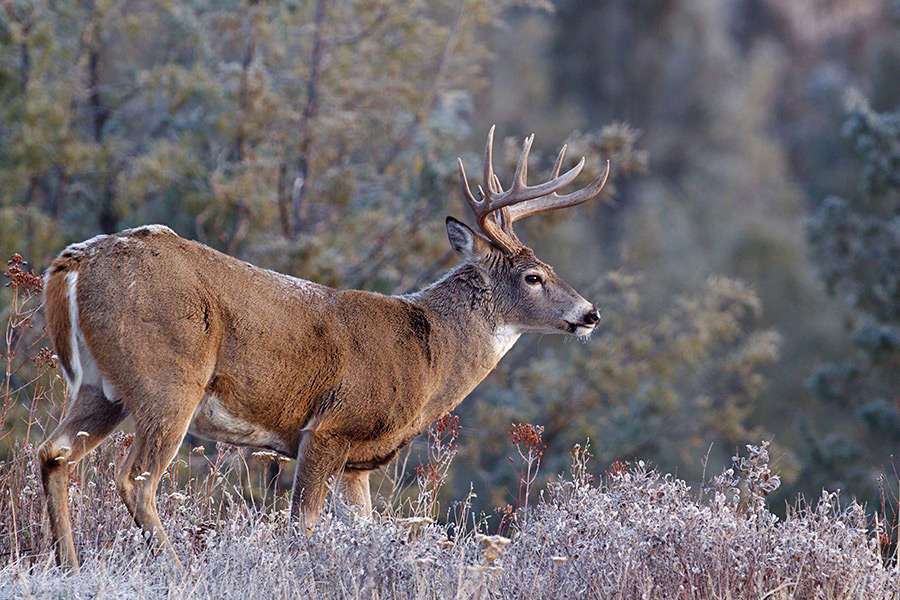There were fewer big game hunters this season, but those who did venture outdoors in Northwest Montana harvested the most white-tailed deer in at least five years, according to state wildlife managers.
The general hunting season concluded across the state last weekend and data from local check stations reflect mixed results for the deer and elk harvests.
Over the last five weeks, there were 1,138 white-tailed deer, including 988 bucks, reported at the six weekend check stations operated by Montana Fish, Wildlife and Parks staff. The final tally was slightly ahead of last year and the second consecutive season with more than 1,000 whitetails reported, reflecting an improving population.
“We’ve been tracking three years of strong fawn recruitment and we’re starting to see those yearlings and 2-year-olds coming through the check stations,” said FWP Regional Supervisor and acting Wildlife Manager Jim Williams. “And we’ve seen some nice mature bucks coming through.”
The mule deer harvest saw a slight increase, with 139 reported at check stations. That was the second most in five years since 159 were reported in 2010. Last year there were 134.
The Olney check station reported the highest percentage of hunters with game at 10.8 percent. State Wildlife Biologist Tim Thier said this year was one of the best seasons for buck harvest since 1994. The Highway 2 check station saw the second highest success rate for hunters at 8.7 percent. Hunters reported 476 white-tailed deer at that station, the most in the region.
While deer hunters enjoyed a better season, the elk harvest suffered, likely due in large part to late snowfall. There were 50 elk harvested in this region, six fewer than last year and 108 fewer than 2010. The number of elk being harvested has declined for five consecutive years.
“We’ve had a decent recruitment everywhere except Spotted Bear for the last year. But up here, we need snow to have an elk harvest,” Williams said. “We didn’t really get snow until the last weekend, and you want snow early on to push them off their summer range and out of the deep, dark spots up in the mountains.”
Another troubling statistic, the number of hunters tallied at check stations in this region was the lowest in at least five years. FWP staff counted 16,708 hunters this season, roughly 1,550 fewer than a year ago.
The overall hunter success rate was 7.9 percent, slightly ahead of last year’s total.
The check station results represent a sampling of the overall harvest. FWP biologists will have a better understanding of the season after the statewide hunter surveys are completed in December and January.
“I think collectively as hunters talk to each other, if the feeling is there is fewer animals, there will be fewer hunters,” Williams said, attributing the perceived population declines as a driving factor for hunter participation. “I think we’ll see an increase in hunters next year.”
Wolf Hunt Continues as Trapping Season Approaches
While the big game season has concluded, hunters can still pursue wolves across the state.
So far 82 wolves have been taken through Dec. 1, including 23 in Northwest Montana, according to FWP.
There have not been any wolves taken in the management unit near Glacier National Park, which has a quota of two wolves. Ten wolves have been taken in both management unit 310 near Bozeman and management unit 390, the largest unit in the state spanning the entire southeast section. Unit 313 near Yellowstone National Park has been closed since Nov. 6 after the quota of three wolves was reached. The adjacent unit, 316, has one remaining wolf left before the quota will have been reached.
The general rifle season for wolves concludes March 15. There is a 24-hour waiting period after a wolf tag is purchased before it is valid.
The trapping season runs Dec. 15-Feb. 28. Last year hunters and trappers killed 225 wolves.
Prospective wolf trappers must purchase a furbearer trapping license and attend a wolf-trapping certification class.
FWP will hold a wolf trapping certification class at the Fairgrounds Trade Center in Kalispell on Saturday, Dec. 6 from 10 a.m. to 2 p.m. Individuals who have been certified in years past do not need to take the class again.
Online registration is required for all participants and can be found at fwp.mt.gov under the “Education” tab.
FWP staff and experienced wolf trappers teach the courses, which cover the specifics of equipment and techniques as well as the history, ethics, management, regulations and requirements of wolves and wolf trapping.
